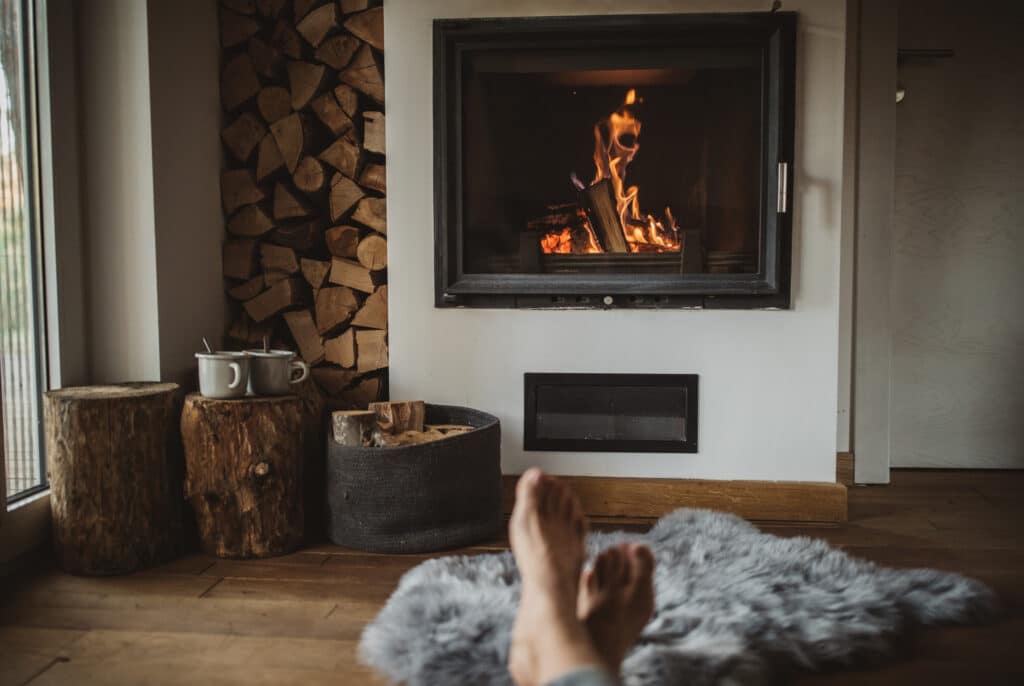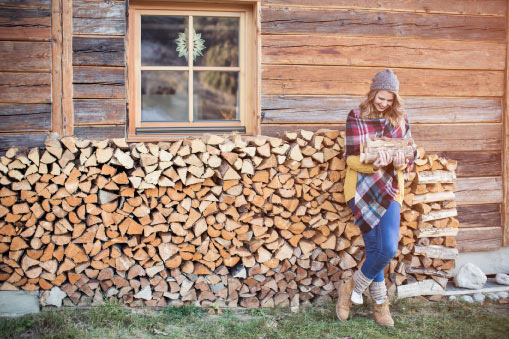There is nothing better than cozying up to a roaring fire on a cold winter night. It is almost meditative: ignoring the chill while wood flame crackles and dances behind a warm hearth.
As with every wonderful thing there are a few drawbacks to a wood fire, however. Cleaning the chimney and hearth and fire safety aside, there is also the hassle of the wood itself, and making sure that you have a worthwhile supply that stays dry is only part of the equation. As anyone who has handled enough firewood and built enough wood piles will tell you, there are things living in that pile that can make life interesting indeed. I’m talking about six-, eight- and hundred-legged critters that see that pile of wood and think: “oh goody, a perfect winter home!”
OK, obviously insects and arachnids don’t think. However, they instinctively know how to find shelter. And a firewood pile often makes the perfect respite from winter weather, as well as a great place to lay eggs that will hatch with the warming of weather in spring.
And if you bring that wood into your home, you could, unwittingly, provide them with an even better situation, as they leave the wood to take up residence in your home. Or the eggs feel the warmth and think it’s time for the bugs inside to come out and begin their life cycles.
So, how do you avoid that situation? Well, let’s first take a look at just what kind of creepy crawlies are lurking in your firewood, and then we’ll show you what steps you can take to avoid bringing them into your abode.
 First off, you have to understand that you will never completely remove insects from firewood – unless perhaps you purchase wood from a retailer and bring it straight home. Insects often live inside and on trees even before their cut down. And just because they are cut down, does not mean the bugs living inside necessarily evict themselves. Storm damaged trees are also a favorite harbor for many types of insects. And, of course, any firewood that is stacked or piled on the ground is a veritable e-vite for all sorts of pests.
First off, you have to understand that you will never completely remove insects from firewood – unless perhaps you purchase wood from a retailer and bring it straight home. Insects often live inside and on trees even before their cut down. And just because they are cut down, does not mean the bugs living inside necessarily evict themselves. Storm damaged trees are also a favorite harbor for many types of insects. And, of course, any firewood that is stacked or piled on the ground is a veritable e-vite for all sorts of pests.
Some of the insects found in firewood include:
• Termites – One of the most destructive insects on the planet, termites, including the eastern subterranean termite, cause an estimated $5 billion worth of damage each year. They chew through wood in order to digest the cellulose inside, building massive colonies that, if unchecked, can destroy entire structures.
• Ants – Once ants gain access to your home – especially the obnoxious carpenter ant or even the Argentine or pharaoh ant, they can not only be hard to evict but also destructive. Carpenter ants, especially, can turn wood walls into brittle honeycombs with their incessant chewing. Unlike termites, who actually digest the cellulose in wood, ants chew through wood to construct colonies.
• Roaches – Many species of roaches, especially the smoky brown and American cockroach (both species are often referred to as palmetto bugs) live outdoors and will seek the refuge of a wood pile for both food and shelter. But they can also thrive inside and will do so if given the right opportunity.
• Stinkbugs – An invasive species, these obnoxious bugs aren’t dangerous but certainly can ruin your moment with the smell they emit when squished or threatened.
• Wood-boring beetles – In no way dangerous, and nothing to worry about. But they can certainly make you jump if one crawls across your hand while picking up a log.
• Pillbugs – Those little bugs you may have called roly-polys as a child are harmless, but they do love to hide in wood piles.
Other pests that love firewood include spiders – which are not insects but arachnids. And the presence of so many insects attracts them as a source of food, as well as shelter. This includes potentially harmful species (all spiders are venomous, just with differing levels of strength) such as black widows.
Request a Free Quote
Have issues with your HVAC system? Zone Home Solutions has five locations around the Atlanta area. Contact us to get a free, no obligation project quote.
Centipedes, scorpions (which can both impart painful bites and stings) and millipedes (which are harmless but can be quite messy) can also find their way into wood piles.
Aside from startling you or jumping out of the way when you pick up any log from a wood pile, some of these nuisance insects may actually hide and not be obvious on any piece of wood that you bring into your home. However, after sitting in a warm home for a short period, they may become active and leave the wood to explore their new environment.
Most of the time, the result will be completely harmless. But recognizing these insects and knowing where they came from may reduce your stress. And instead of panicking that you have an invasion from outside the home, realize that you may have aided that invasion.
That is why it would behoove you to be aware and also follow these steps to ensure the least chance of pests invading your wood pile – and thus invading your home:
• Fell trees and cut wood in mid-to-late fall – This may make the wood less attractive to the type of bugs that bore into and eat wood, most of which emerge in the spring (such as termites).
• Only bring in the wood that you are immediately set to burn – By immediately, we mean you can bring in enough wood to represent a couple of days supply at a time. The reason not to bring in weeks’ worth is that storing firewood in the home for long periods speeds insect development inside the wood, which leads to those bugs emerging inside your home.
• Do not stack wood against your house or garage walls – Keep a minimum of three feet between the firewood and any building. This discourages bugs from moving off the wood into your home and also allows better air circulation, which promotes rapid and thorough drying of the wood. For better burning
• Do not stack wood directly on the ground – Wood on the ground, especially for termites, is like a free buffet. Termites are blind, often traveling underground, so if they burrow their way into a wood pile, the feast is on. At the very least, keep a layer of plastic between the wood and the ground. But it is best to either buy a metal holder or to be able to stack it on concrete, like the edge of a driveway. These setups also keep the wood drier and make for better burning.
• Avoid applying chemicals to firewood for pest control – Think about it, you’ll then be burning those chemicals in your home, which is not smart. If you do need to apply something to your wood to rid it of pests, seek out organic opportunities, such as vinegar or synthetic pyrethroids.
Follow these practices and you should keep your home relatively free of pests for the duration of any long, cold weather – all while you enjoy the fruits of your firewood harvest.

If you do find yourself in the midst of any sort of pest infestation, however, understand that help is just a phone call away. Zone Home Solutions has been north Georgia’s favorite option for pest control for two decades, and the trained professionals know exactly what to do to evict even the most tenacious of pests from your home – like termites – no matter how they got there. Zone technicians can also help you build
a line of defense so that nothing invades your space in the first place.
We are ready help when you need us, and our commitment to customer service will ensure an extraordinary experience. Contact us now at 770-904-5432 and let us solve your pest problems.
